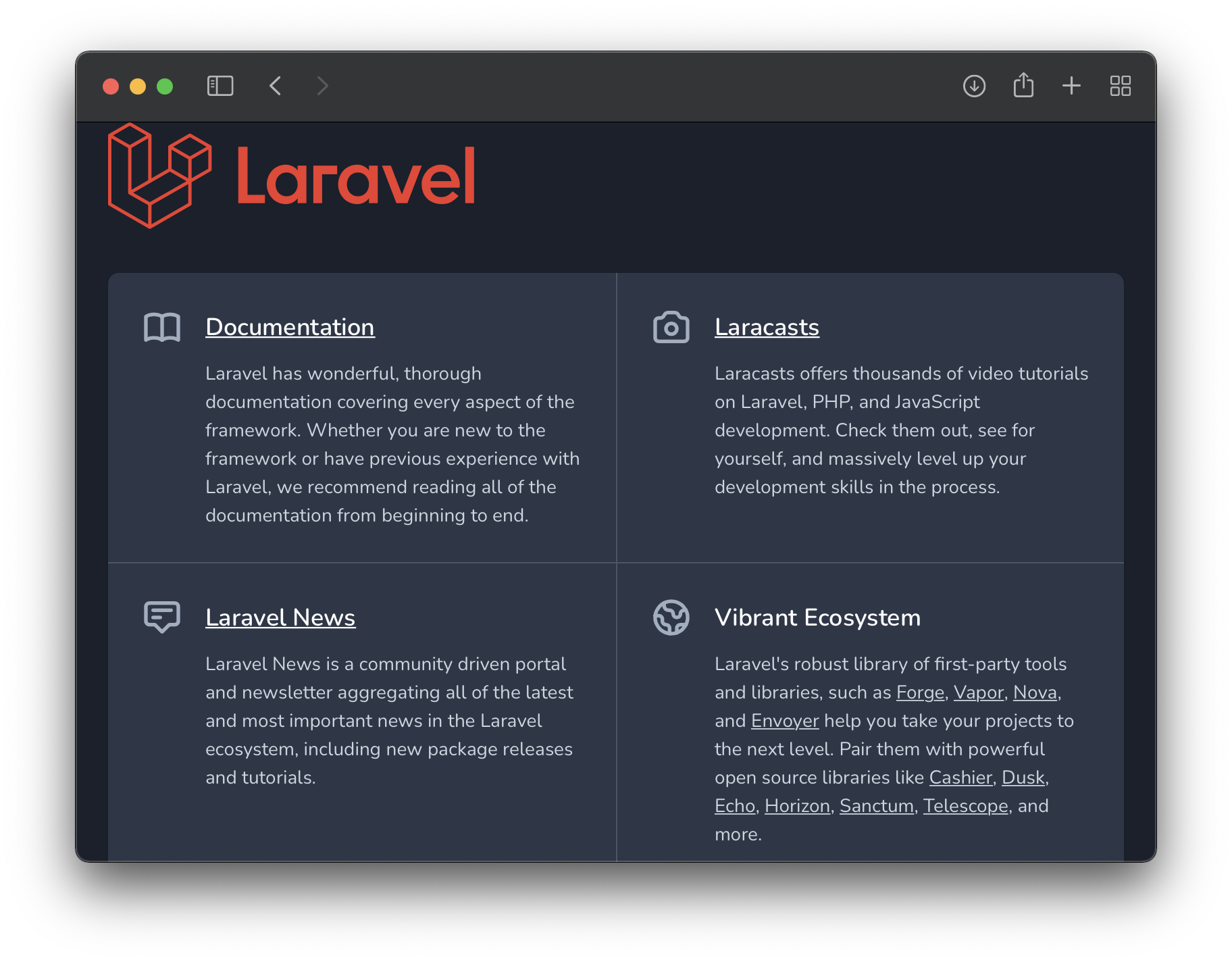Laravel§
To run apps based on the Laravel framework using Unit:
Install Unit with a PHP language module.
Install and configure Laravel’s prerequisites.
Create a Laravel project. For our purposes, the path is /path/to/app/:
$ cd /path/to/
$ composer create-project laravel/laravel app
Run the following command (as root) so Unit can access the application directory:
# chown -R unit:unit /path/to/app/
Note
The unit:unit user-group pair is available only with official packages, Docker images, and some third-party repos. Otherwise, account names may differ; run the ps aux | grep unitd command to be sure.
For further details, including permissions, see the security checklist.
Note
See the Laravel docs for further details on directory structure.
Next, prepare the Laravel configuration for Unit (use real values for share and root):
{ "listeners": { "*:80": { "pass": "routes" } }, "routes": [ { "match": { "uri": "!/index.php" }, "action": { "share": "/path/to/app/public$uri", "fallback": { "pass": "applications/laravel" } } } ], "applications": { "laravel": { "type": "php", "root": "/path/to/app/public/", "script": "index.php" } } }
Upload the updated configuration. Assuming the JSON above was added to
config.json. Run the following command as root:# curl -X PUT --data-binary @config.json --unix-socket \ /path/to/control.unit.sock http://localhost/config/
Note
The control socket path may vary; run unitd -h or see Startup and Shutdown for details.
After a successful update, browse to http://localhost and set up your Laravel application:
